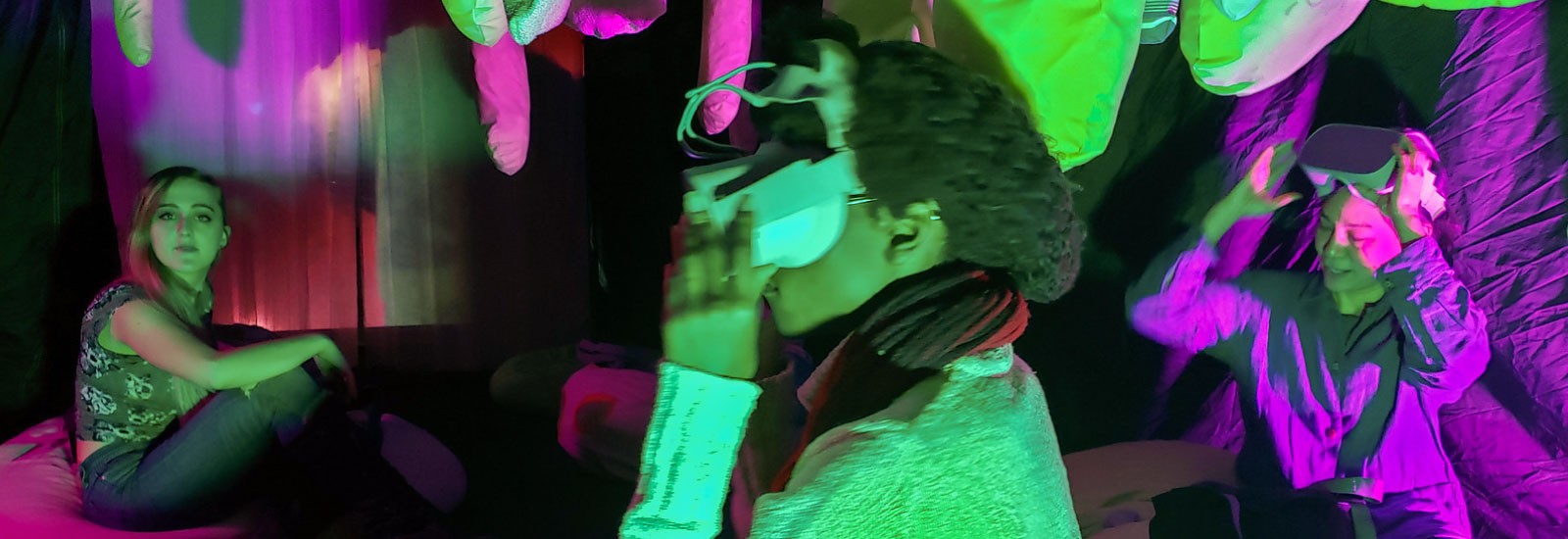A dancer’s performance ritual confronting the anguish and fear of a planetary emergency. A multimedia art and science exhibition exploring the significance of plants’ carbon sequestration during the Anthropocene period (Photo, above: "Un-becoming Carbon," demonstrates the vital relationship between plants and humans. Credit: Amy M. Youngs, art). An English professor uncovering links between storytelling and climate change. These are some of the experts within the College of Arts and Sciences applying their arts and humanities intellect to a growing global crisis.
Climate change as a discipline is no longer confined to the scientific arena.
People outside the sciences are expressing complicated feelings about climate change, attaching narrative and emotion to the science, and aesthetically amplifying environmental realities, allowing audiences a more accessible, identifiable connection to global warming.
“Narrative matters,” said Jason Cervenec, education and outreach director at the Byrd Polar Climate and Research Center. “Just getting more scientists in and sharing more information isn’t actually going to work. You need trusted emissaries and compelling stories, and that’s probably going to come from the arts and the humanities.”
Through collaborative initiatives such as the Livable Futures network — a project created by faculty with support from the Global Arts + Humanities Discovery Theme — artists, scholars and activists are dissecting climate change and its impacts in bold, new ways.
Climate Gathering
There was a time when Norah Zuniga Shaw turned away from climate change. She didn’t want to deal with it and felt powerless against its ominous, overwhelming magnitude.
“I was just scared,” said Zuniga Shaw, a professor in the Department of Dance and the Advanced Computing Center for the Arts and Design (ACCAD). “I was denying it, essentially.”
Then, about five years ago, she decided to confront her climate anxieties, asking herself how she could act by applying her artistic expertise.
With her collaborators, she started creating and offering regular performance rituals, Climate Gathering, integrating audience participation, live sound and dance in a multimedia environment that includes a research tent on loan from Byrd Polar. The project seeks to empower participants, allowing them to engage with climate change and the grief, fear and anger associated with it.
“Audiences report that it helps them reflect and feel and open up to an issue that usually is just overwhelming and makes us feel disempowered," Zuniga Shaw said. "With this project, we’re turning toward the issue and helping people commune and connect with themselves and each other. They find meaningful intention and feel their way into action.”
Climate Gathering is part of a larger collaboration for Livable Futures that Zuniga Shaw co-founded with support from the Global Arts and Humanities Discovery Themes. The on-campus performances are held at ACCAD's Motion Lab. Future performances were scheduled to take place at Ohio State and within the Columbus community. Due to the COVID-19 pandemic, however, Zuniga Shaw and her team will offer online and social distancing versions.
“In 2020 we performed these climate rituals with communities in New York and Melbourne,” she said. “Now in response to COVID-19, the Climate Gatherings have become Performance Rituals for Livable Futures, making connections between pandemics and the climate emergency and helping respond to uncertainty.”
Each performance ritual is conducted for 10-20 people the artists call a “wisdom circle.” Zuniga Shaw’s haunting movements and fragmented chants are influenced by the participants — who in turn are influenced by her. This symbiotic relationship elicits a spontaneity that amplifies Climate Gathering’s relevance and catharses in a dynamic piece.
“Another thing we need in addition to (the science) is a way to confront (climate change) as a reality, and that’s where I think the arts can play a significant role,” Zuniga Shaw said. “The performance work we’re doing is bringing (climate change) to the scale of people’s bodies and lives and actually doing something together. I think that amplifies the dialogue and gets people more mobilized.”
Continue learning about how the arts and humanities are confronting climate change.
